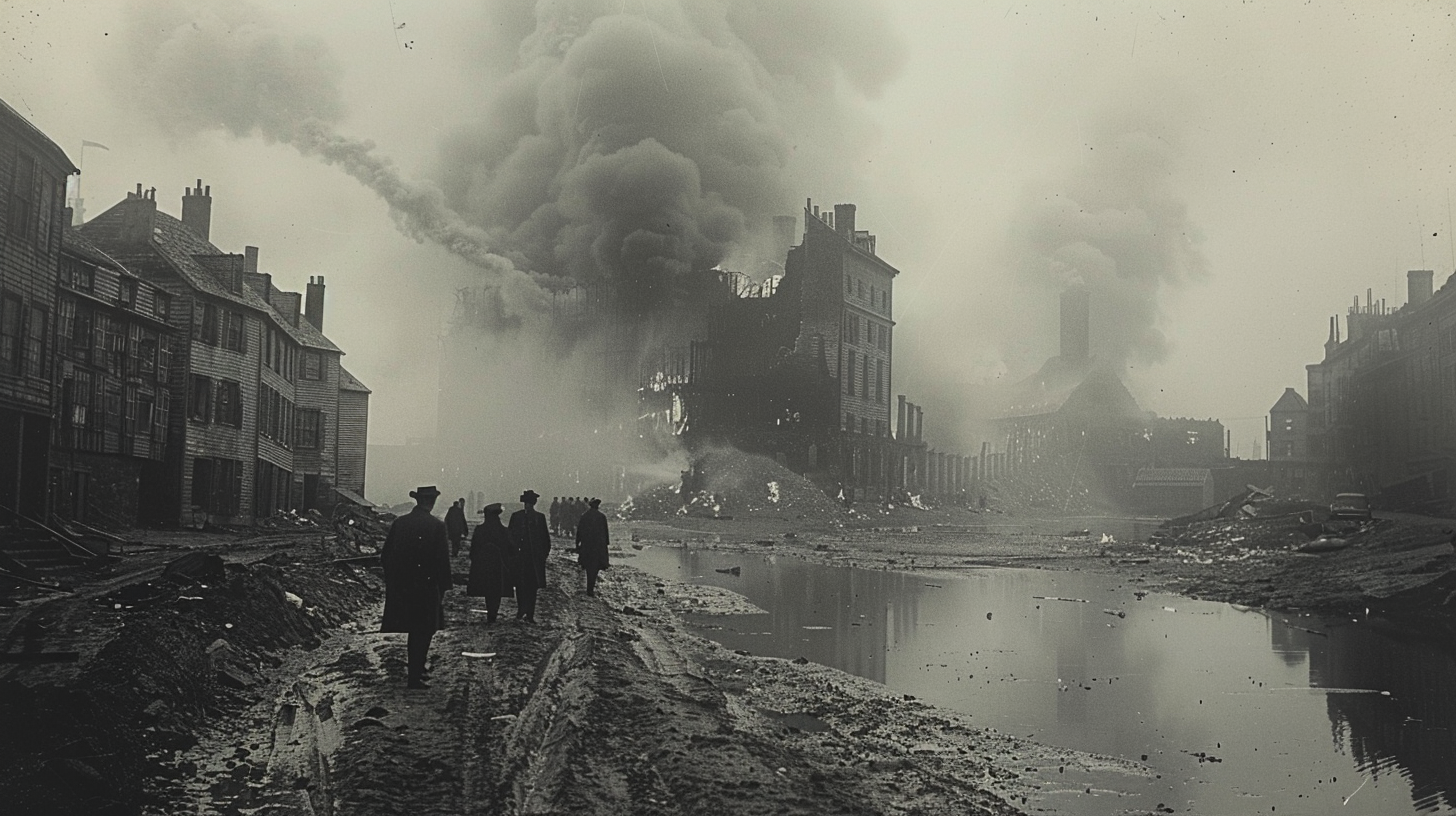1760: The Great Fire of Boston
On March 20, 1760, the great fire of Boston erupted, leaving a lasting impact on the colonial city. This catastrophic event destroyed 349 buildings in the heart of the city, leaving many residents homeless and forever changing the landscape of Boston.
The Cause and Aftermath
The exact cause of the fire remains unknown to this day. However, historical records suggest that it started in a small dwelling on Cornhill Street. Strong winds quickly spread the flames, engulfing the wooden structures that made up the majority of the city.
The fire raged for hours, consuming everything in its path. The lack of an organized firefighting force and inadequate water supply made it nearly impossible to contain the blaze. The fire finally subsided when it reached the harbor, where the water acted as a natural barrier.
The aftermath of the great fire of Boston was devastating. The destruction of 349 buildings left countless residents homeless and without shelter. The city’s infrastructure was severely compromised, and the once-thriving commercial center was reduced to ashes.
Changes in Building Codes and Firefighting Techniques
The great fire of Boston served as a wake-up call for the city’s officials and residents. It highlighted the need for improved building codes and firefighting techniques to prevent such disasters in the future.
In response to the fire, the city implemented stricter regulations on construction materials and building designs. Wooden structures were gradually replaced with brick and stone buildings, which were less susceptible to fire. Additionally, the use of fire-resistant materials and the implementation of firebreaks became common practices.
Firefighting techniques also underwent significant changes. The city established the first organized fire department in 1678, but it was not adequately equipped to handle the scale of the great fire of Boston. After the disaster, the fire department was restructured and expanded. Firefighters received better training, and new equipment, such as fire engines and hand pumps, were introduced.
The Challenges of Urban Fire Risks
The great fire of Boston serves as a reminder of the challenges faced by growing urban centers in managing fire risks. In the 18th century, most cities were built with wooden structures, making them highly susceptible to fires. The lack of proper firefighting infrastructure and resources further exacerbated the risks.
As cities expanded and populations grew, the need for effective fire prevention and response became increasingly evident. The great fire of Boston highlighted the importance of investing in fire safety measures, such as improved building materials, dedicated firefighting forces, and reliable water supply systems.
Today, cities around the world have implemented stringent building codes and advanced firefighting techniques to mitigate the risk of fires. Modern cities are equipped with state-of-the-art fire detection systems, sprinkler systems, and highly trained firefighting personnel.
References:
The great fire of Boston in 1760 was a pivotal event in the city’s history. Its destructive power led to significant changes in building codes and firefighting techniques. The lessons learned from this disaster continue to shape urban fire safety practices today.

